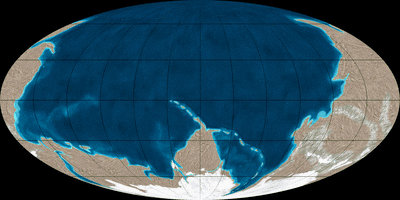Ophiolite, everyone uses the term continental drift when they talk about the Atlantic Ocean growing while the Pacific Ocean shrinks.
Not if they have received sound training in geology. I readily accept corrections from those trained in physics, genetics, avionics and a bunch of other subjects of which I lack detailed knowledge. I think it makes sense to adopt the correct terminology when one becomes aware of it.
{Emphasis added}
Where this goes wrong is the drift could not begin before Pangea separated.
The movement of plates was ongoing before Pangea separated, so your statement is incorrect. (Unless you wish to invent a new and meaningless/misleading definition for continental drift.)
So if you are talking about how it started, the correct term is earthquake (at least where what we always call South America broke off from Africa).
Incorrect. An earthquake is a specific energy release occasioned by movement along a fault plane (or more usually along a series of fault planes and zones). Such movement is an essential part of plate tectonics. If you wish to identify "how it started" you need to look to convective motion in the solid mantle.
But after that happened and South America turned itself around it's accurate to call the plate tectonic movement a continental drift.
1. South America did not "turn itself around".
2. The term continental drift is misleading and has been progressively abandoned by the geological community. The term plate tectonics was first used in print in a 1969 paper in Nature. (McKenzie, D.P. & Morgan, W.J. (1969).
Evolution of triple junctions. Nature 224, 125–33). Even before then reference was being made to sea floor spreading was posited by Hess and expanded upon by Dietz, and demonstrated through the analysis of magnetic anomalies, first by Mason, then by Vine and Mathews.(See - Hess, H.H. (1962).
History of Ocean Basins. In
Petrologic Studies –A Volume in Honor of A.F. Buddington, pp.599–620; Dietz, R.S. (1961).
Continent and ocean basin evolution by spreading of the sea floor. Nature 190, 854–7; Mason,R.G.(1958).A magnetic survey of the west coast of the United States between latitudes 32◦and36◦N, longitudes 121◦ and 128◦ W. Geophys.J.Roy.Astron.Soc.1,320–9; Vine, F.J. & Matthews, D.H. (1963).
Magnetic anomalies over oceanic ridges. Nature 199, 947–9)
Thereafter the term was progressively dropped, except when referring to the historical development of both theories.
3. Continental drift envisaged sialic continents drifts over simatic oceans. That does not occur. Plates, that may be continental, oceanic, or a combination, move over the relatively weak asthenosphere. The two processes are quite different, though they share come common features. Calling plate tectonics continental drift it not too much different to calling the Big Bang Theory, Steady State Theory.


